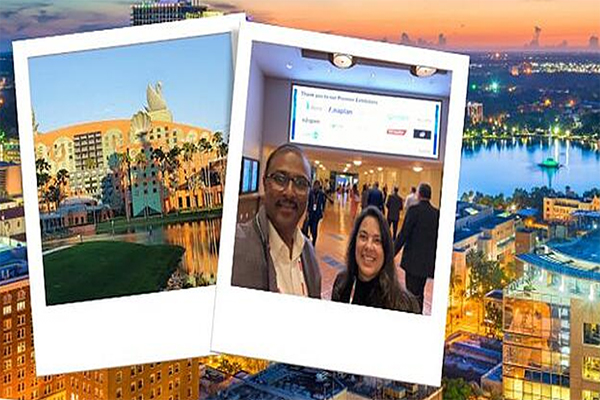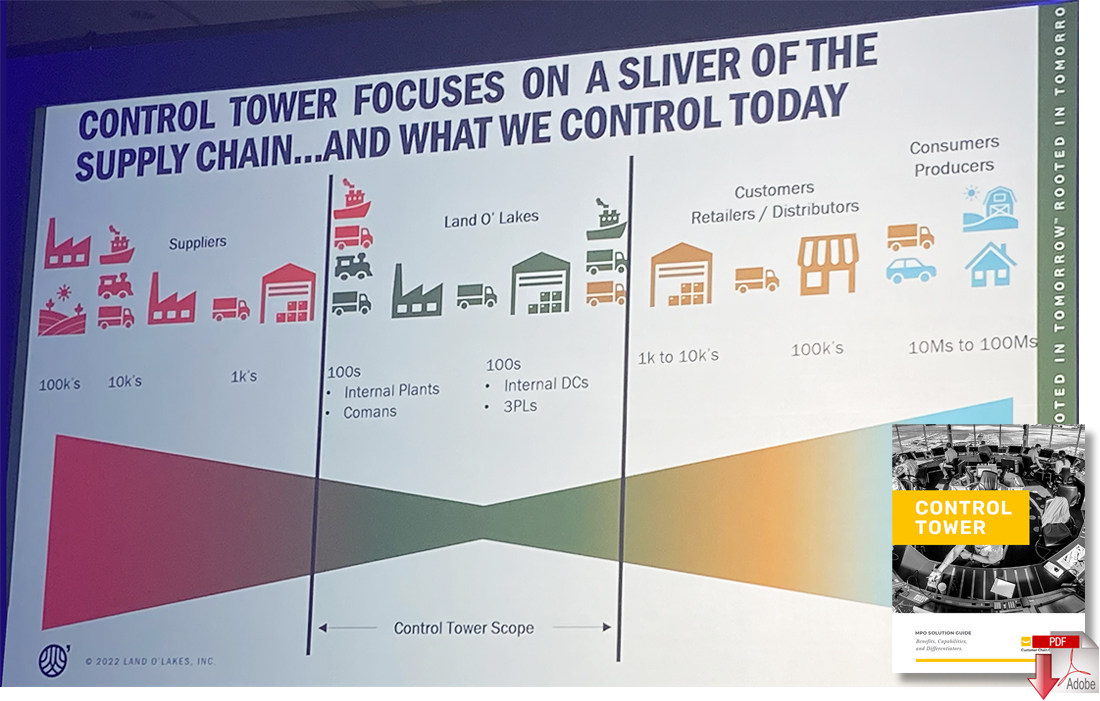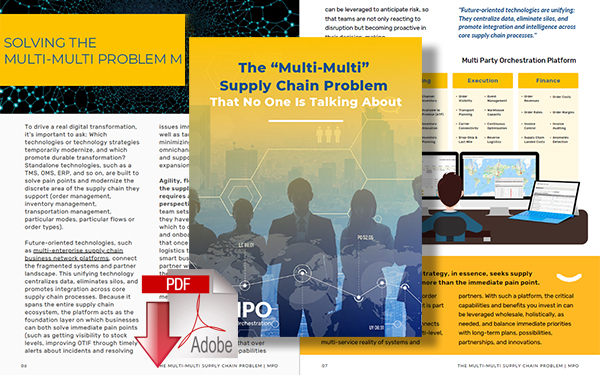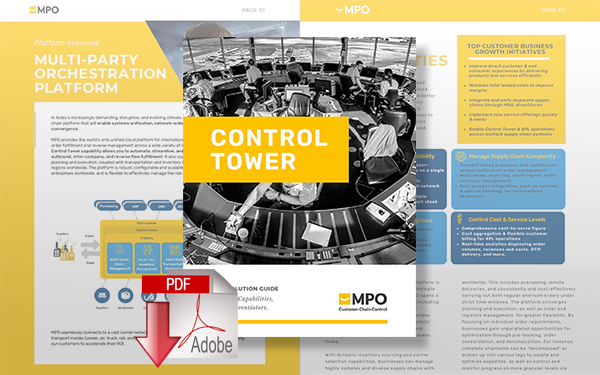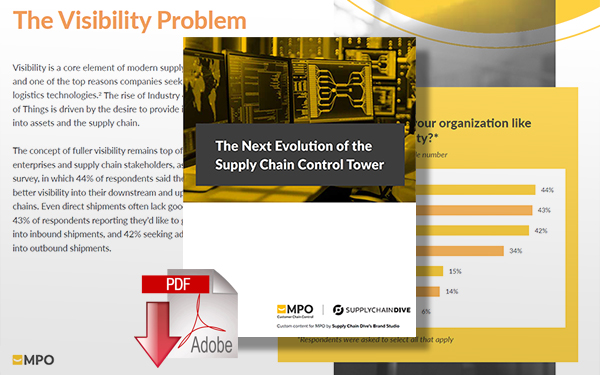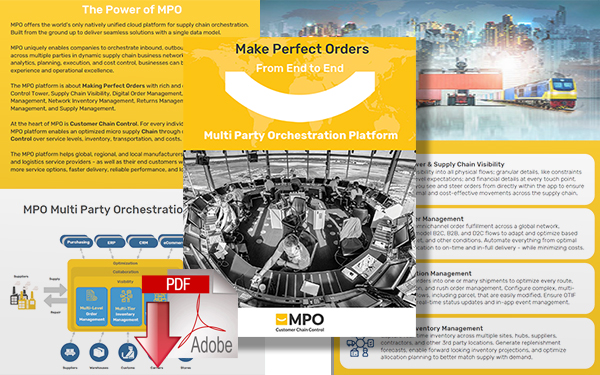Key Takeaways and Reflections from the Gartner Supply Chain Symposium/Xpo Americas

The most successful supply chain leaders are designing business and technology strategies around mitigating risk and navigating uncertain environments with agility, and above all this, the most widely talked about topic for the event was sustainability.
The Gartner 2022 Supply Chain Symposium
At the start of June, we were excited to head to the Gartner Supply Chain Symposium/Xpo Americas in sunny Orlando, Florida.
The isolation of the past couple of years has really taught us to appreciate the value and fulfillment we get out of these live events. It was a pleasure to meet individuals across various businesses and industries and learn about their processes, challenges, and ambitions.
The theme of the event was also a relevant and urgent one: Building a Resilient Supply Chain in a Changing World.
Many of our conversations and the lectures we attended underlined the way that our expectations and practical realities around supply chains have shifted. We see now that even after the pandemic, disruption is not an outlier; volatility is a permanent condition – especially in the global arena.
The new normal is a new era. The most successful supply chain leaders are designing business and technology strategies around mitigating risk and navigating uncertain environments with agility. Above all this, the most widely talked about topic for the event was sustainability.
Read: Start Executing Your Supply Chain Sustainability Goals
Here, I reflect on the key insights and takeaways from our time at the event.
Highlights of the Gartner Supply Chain Symposium
What High-Performing Supply Chains are Getting Right
The Gartner Global Supply Chain Top 25 for 2022 highlighted an “ambitious sustainability agenda” as one of the key characteristics of high-performance supply chains.
Those who succeed can also partner dynamically within a broad ecosystem and have “self-stabilizing” supply chains. In a disruptive global marketplace, agile decision-making is key to competitive advantage. But you also need to act fast. Flexible and configurable technology ensures shifts in strategy are enacted immediately within the supply chain. New initiatives around customer requirements, product diversification, or changes in service levels are supported by quickly configuring new flows or seamlessly adding and onboarding new partners with little to no downtime.
The Session that Resonated: Backroom to the Boardroom
The session Visibility for Chief Supply Chain Officers (CSCOs): From the Backroom to the Boardroom really resonated. In my experience, the greatest challenge for all supply chain managers is effectively articulating that supply chain is about more than just the sum of customer service, logistics, and S&OP but about how they affect and relate to one another – especially in the greater global context. Even after disruptions like increasing freight prices, material scarcity, port closures in China, congested port operations, and labor contract negotiations in the US, supply chain managers are still struggling to convey that supply chains need to be understood in greater depth within a broader context.
Supply chain managers create extraordinary value beyond logistics, and this can be measured through ROI. Service, cost, and cash are three areas that companies struggle to balance – which means that supply chain and finance departments basically have the same goal. So, how can managers achieve that balance and align with the company’s overall mission?
Considering the state of the disruptive global market – which is not a temporary condition but a mainstay - supply chains must be designed for an agile market response, as well as support an organization’s own value proposition. Digital transformation is another disruptive force, as companies must deliver against similar value propositions backed by more advanced technologies – all under the pressure of constant disruption, risk, and uncertainty.
The challenges of recent disruptions and market demands are mobilizing supply chain managers to drive digital transformation. They’re getting more proficient at articulating their need for technology that will connect their siloed systems, parties, and processes to achieve supply chain visibility and critical capabilities, like strategic planning and enabling assurance of supply.
What Our Conversations Reveal About Need & Technology Strategy
Supply chain technology was no doubt at the top of the conversation. A notable shift however was the increased interest in sustainability and what technology could do to better support green efforts like curbing Greenhouse gas (GHG) emissions.
Supply chain visibility was another hot topic; organizations are still experiencing an incredible number of blind spots, from upstream to downstream, and frankly everywhere in between as they collaborate with their transportation champions.
Read the Article: What Is End-to-End Supply Chain Visibility?
Companies are looking for ways to optimize their connections. Part of the visibility problem is that information is siloed across different systems, like ERPs and WMs. But data integration and visibility are only the first steps. Once businesses and their networks have a single-source platform, embedded intelligence will be critical to making strategic and optimized decisions on what that data reveals.
Through our conversations, we also discovered how companies are teaming up and meeting regularly to share best practices and processes. These companies understand that every factor in the supply chain is a moving target (products, inventory, capacity, rates, etc.) and subject to change. By sharing their experiences, these professionals are brainstorming and innovating ways to leverage technology to be nimble and agile.
Coca-Cola and Land O’Lakes are two great examples I had the privilege of listening to at a speaking session entitled Lessons from the Leaders - Industry Control Tower: Case Study: The time is now for an Industry Control tower to Tackle Logistics Disruptions. Rob Haddock, Group Director, Planning & Logistics at Coca-Cola, and Dustin Braun, VP of Logistics & Planning at Land O'Lakes recounted how they are both looking for what they called a “360-degree view,” which they refer to as a Control Tower. Their mission has been reaching out to anyone and everyone willing to join them in their effort to find that silver bullet. As a group, they compare notes, share ideas, use cases, and even failures to learn from one another and make their supply chains more efficient, effective, and resilient.
Looking for technology that will help drive supply chain visibility, agility, sustainability, and resilience? The MPO Multi-Party Orchestration Platform provides businesses across diverse industries with end-to-end visibility they can act on in real-time. Companies can also plan and execute orders against the lowest carbon footprint and leverage embedded intelligence to partner dynamically and mitigate the impacts of disruption. To learn more about how the MPO cloud platform can drive real impact and ROI for your business, contact us at [email protected], [email protected], or request a demo today.
About the Author
Christine Taylor - Sr. Director, BD for US, Canada & LATAM, Christine is a highly experienced business executive within the logistics and supply chain industry. Her expertise spans supply chain optimization, transportation management solutions (TMS), third-party logistics, as well as parcel, LTL, OTR, and expedited services.
Related 'Supply Chain Visibility' Resources
The “Multi-Multi” Supply Chain Problem That No One Is Talking About
In this white paper, we examine why the average organization is losing significant profits from supply chain disruptions and why we need to understand the deeper problem to change the outcome. Download Now!
Supply Chain Control Tower & Visibility
This Supply Chain Control Tower and Visibility solution guide provides a deeper look into the platform's capabilities and benefits, as well as a practical overview of why a unified and converged approach will make all the difference in running an efficient and cost-effective supply chain that drives superior customer satisfaction. Download Now!
The Next Evolution of the Supply Chain Control Tower
This white paper explores why visibility is a core element of modern supply chain digitization, and a top reason to implement logistics technologies in your supply chain. Download Now!
Multi-Party Orchestration Platform
In this brochure, you'll find a guide to MPO's unified cloud platform for multi-party orchestration, including its rich and flexible solutions: Control Tower, Supply Chain Visibility, Digital Order Management, Transportation Management, Network Inventory Management, Returns Management, Spare Parts Management, and Supply Management. Download Now!
More Resources from MPO
Related Article: 5 Critical Trends for Supply Chain Control Towers in 2022
Article Topics
MPO News & Resources
TMS+ Go Beyond Transport to Optimize Cost, Service, & Resiliency Multi-Party Orchestration Platform When It Comes to Digital Transformation You May Not Be Doing What You Think How Chief Operating Officers are Achieving Results with Supply Chain Software SPARK Matrix Transportation Management System Software Analyst Report Top Trends Driving Change and Technology Strategy Within Logistics & Transportation Management 5 Key Steps for Optimizing your Last Mile Delivery More MPOLatest in Business
Trucking Industry Pushes Back on Government’s Electric Mandates Senators Take Aim at Amazon with Warehouse Worker Protection Act Maersk Sees Silver Lining in Red Sea Shipping Challenges Happy Returns Partners With Shein and Forever 21 to Simplify Returns Baltimore Opens 45-Foot Deep Channel Following Bridge Collapse Ranking the World’s 10 Biggest Supply Chains The Top 10 Risks Facing Supply Chain Professionals More Business